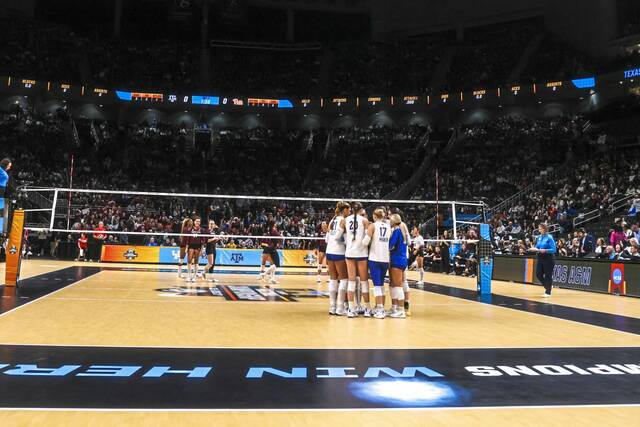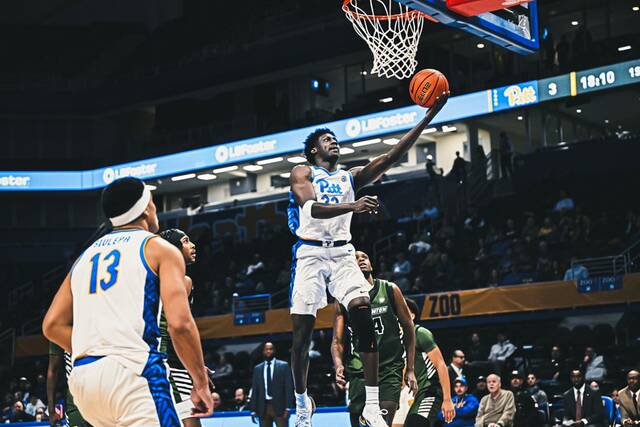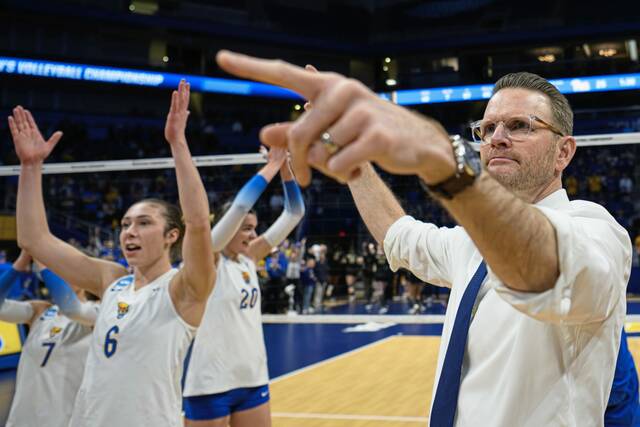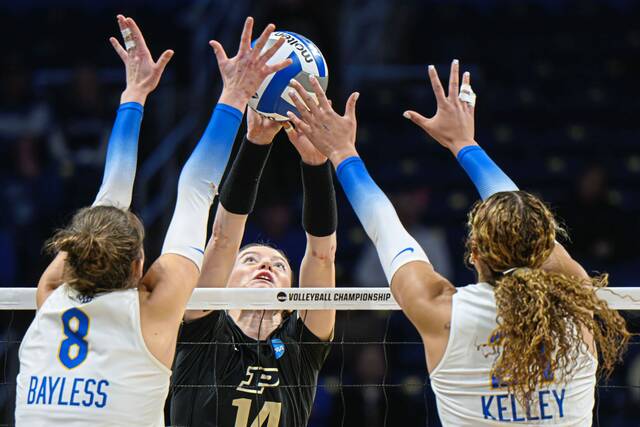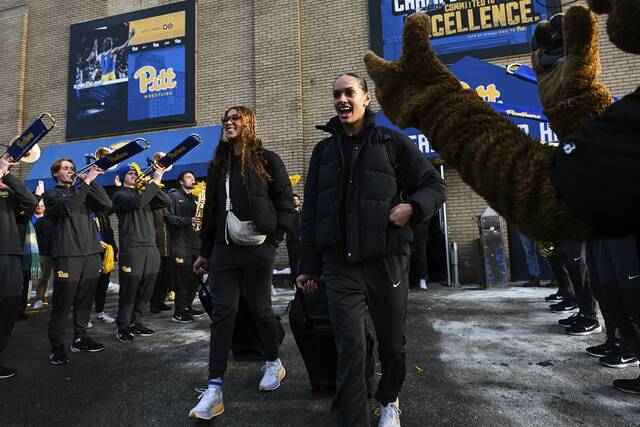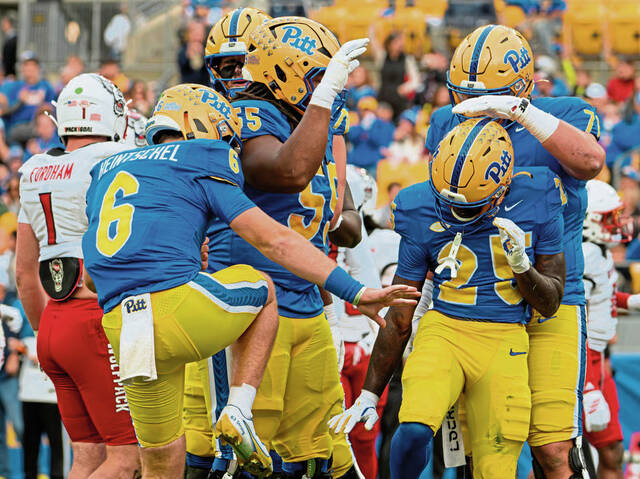Dating back to the first time it happened — Tony Dorsett, 1,686 yards as a freshman, 1973 — Pitt has claimed 15 running backs who have broken the 1,000-yard barrier in 23 of 49 seasons.
The list is an impressive one, including:
• Pro Football Hall of Famers Dorsett and Curtis Martin.
• The 2021 NFC touchdown leader (James Conner of the Arizona Cardinals).
• Four backs — Dorsett, Dion Lewis, Curtis Martin and LeSean McCoy — who were on teams that played in Super Bowls.
• And two (Qadree Ollison and Darren Hall) who did it in the same season.
But there hasn’t been a Pitt back reach 1,000 yards since Ollison and Hall did it in 2018, the first time the Panthers played in the ACC Championship game.
Given Pitt coach Pat Narduzzi’s desire to re-ignite the ground game this season, perhaps it’s time for another.
“Could be,” Narduzzi said Thursday morning before amending his thought and saying, “Expect it.”
But who is the prime candidate?
Running backs coach Andre Powell spoke Thursday after practice about having five backs who can play “winning football.”
That includes the trio of Izzy Abanikanda, Vincent Davis and Rodney Hammond Jr. who carried the load last season and totaled 1,748 yards on the ground.
Abanikanda, who led the team with 651 yards rushing, said that won’t be satisfactory in 2022.
“We want to prove that we can go back to the old Pitt and run the ball,” he said, citing by name 1,000-yard running backs Ollison, Hall and Conner.
“We’re trying to show that we can do that, as well. We’re way more explosive (than last season), way tougher, way faster, way stronger together. The season is around the corner. We’re ready.”
Abanikanda has the look of a future NFL running back, with a thick upper body and thighs on a 5-foot-11, 215-pound frame. He also has enough speed that Powell, also the special teams coach, has used him on kickoff returns.
Powell likes what he’s seen from Daniel Carter, the most improved offensive player this spring, and C’Bo Flemister, a transfer from Notre Dame.
Powell didn’t meet Flemister until a few days before training camp, but he quickly made an impression on his coach.
“He is the toughest guy, hands down, (in the running back room).”
Just as important, Flemister is, in Powell’s words, “a football junkie, a complete football junkie.”
“Every time I go in my room, he’s in there. He’s always wanting more. With that type of attitude, he’s going to find a place to help this football team.”
How is Powell going to roll five running backs into a game?
“Right now, there’s no solid plan on how (the rotation) is going to take place,” he said.
Is he worried about keeping everyone happy? So far, he’s seen no reason for concern.
“There has not been any conversation in our room about, ‘I didn’t get enough carries,’ ” Powell said. “We don’t play that way. Although we’re competing, we’re trying to complete each other.”
Said Abanikanda: “If anybody’s hot on the field, I’m happy for them.”
Powell points to successful precedent.
“Last year, it worked out great,” Powell said. “Rodney was able to go in games when the other team was kind of beat-up or sluggish, and he was fresh and had good success. He proved he can play.”
Powell said he gave Hammond, a sophomore, two areas in which to improve.
“In the running game, he had to work on knowing what the people around him were doing,” he said. “If he knew how we targeted a play, he can better find more yards.
“He’s talented. He can really accelerate and sometimes he guessed (where there was daylight) and guessed right, and sometimes he guessed and guessed wrong. He’s worked on that hard.”
If he continues to improve, Hammond also may become more of a factor in the pass game, especially in protection and dump-offs.
With five talented backs, Powell will take that scenario over what could happen when a team doesn’t have good depth. He remembers a game when Pitt, because of injuries and illness, was down to one scholarship back and two walk-ons.
“I’m glad we’re not there,” he said.



